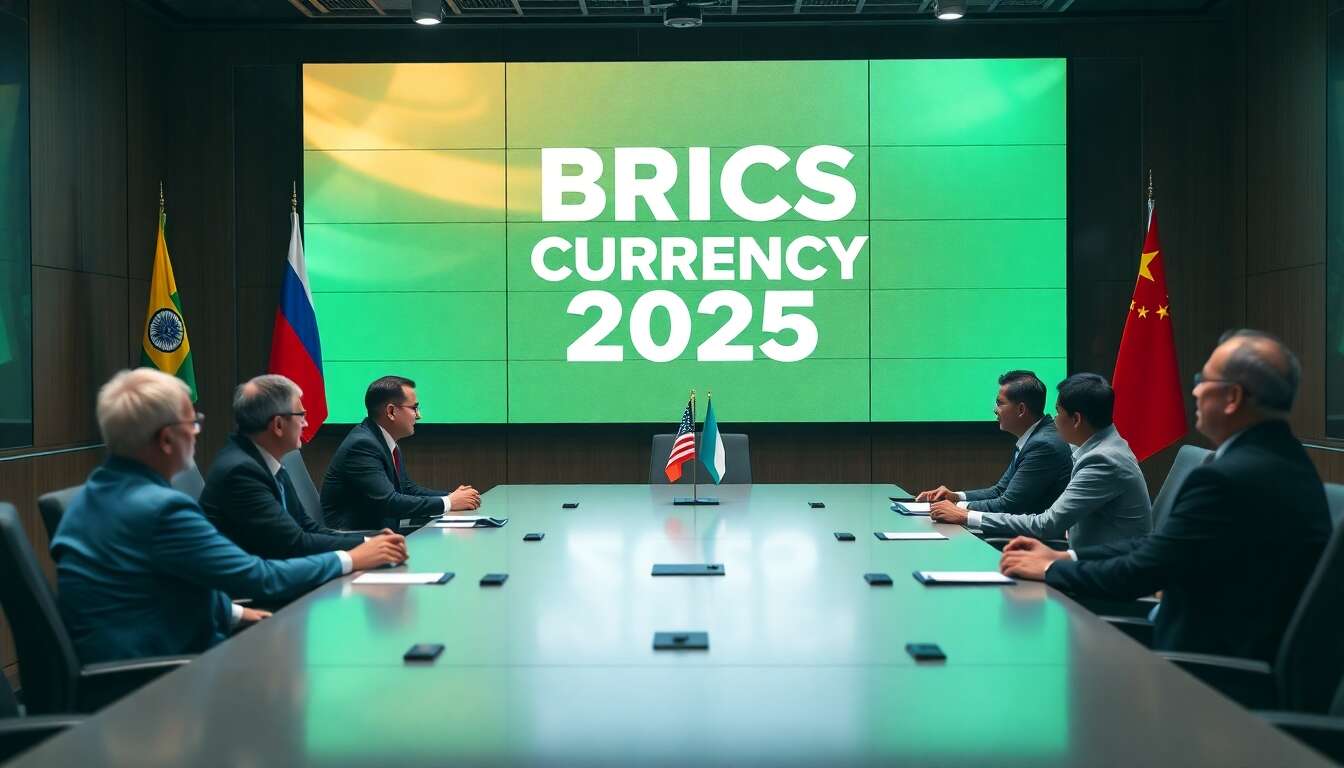The anticipated launch of the BRICS currency is set to mark a significant transformation in the global financial landscape. As economic tensions and geopolitical dynamics evolve, the need for a shared currency among the BRICS nations—Brazil, Russia, India, China, and South Africa—has never been more pressing. This initiative aims to provide an alternative to the existing global monetary norms and reduce the dominance of the US dollar, signaling a strategic pivot in international economic alliances.
Lancement de la monnaie commune des BRICS : pourquoi maintenant ?

The Rationale Behind the Timing
As emerging economies, the BRICS nations have been seeking ways to reduce the economic dependency on Western currency systems. With growing economic clout, accounting for approximately 31.5% of global GDP, these countries aim to establish an independent financial system to safeguard their economic interests. The momentum for a new BRICS currency has been building, driven by several factors:
- The desire to reduce exposure to international market fluctuations.
- The need to enhance trade among BRICS countries.
- Political motivations to assert financial sovereignty.
Strengthening Economic Ties
By adopting a unified currency, the BRICS nations hope to eliminate the currency conversion barriers that currently hinder economic integration. This monetary unity promises to boost intra-group trade, streamline cross-border investments, and offer a competitive edge in global markets. The move is indicative of a larger strategic shift towards deeper economic cooperation and collective bargaining power.
With the decision to forge ahead, the BRICS countries are setting their sights on reshaping the existing financial architecture, which naturally leads us to the potential challenges and benefits this new currency might hold for the US dollar and the broader global economy.
Les implications pour le dollar et l’économie mondiale
Impact on the US Dollar
The introduction of the BRICS currency represents a challenge to the hegemony of the US dollar in global trade. As the preferred currency for international reserves and transactions, the dollar’s influence is substantial. However, with the advent of the BRICS currency, several potential impacts on the dollar must be considered:
- Potential decentralization of global currency reserves.
- A reduced reliance on the dollar for BRICS trade and investment.
- Possible pressure on the dollar’s valuation in international markets.
Wider Economic Repercussions
Globally, the adoption of the BRICS currency could catalyze changes in economic alliances and trade policies. By encouraging a shift towards a multi-currency system, BRICS could foster increased volatility in currency markets while also paving the way for greater financial diversification. This could potentially lead to:
- New trade agreements and regional blocks aligning economically with BRICS.
- A shift in power dynamics within international economic organizations such as the IMF and World Bank.
As these implications unfold, attention naturally turns to how the BRICS currency can be effectively integrated within the existing financial systems, particularly through innovative technologies such as blockchain.
Systèmes de paiement blockchain : un nouvel ordre financier global

Role of Blockchain in Currency Integration
Blockchain technology stands at the forefront of the BRICS currency integration strategy. By harnessing its potential, the BRICS nations aim to create a secure, transparent, and efficient system for managing cross-border transactions. The integration of blockchain could address several key areas:
- Secure and tamper-proof transaction records.
- Efficient settlement and clearing processes.
- Real-time currency exchange capabilities.
Revolutionizing Global Finance
The deployment of blockchain within the BRICS currency framework could redefine global finance by promoting a decentralized approach to transactions. This technology allows for reducing intermediaries, lowering transaction costs, and enhancing trust among international parties. The endorsement of blockchain by BRICS signals a shift towards a more equitable and inclusive financial ecosystem, potentially inspiring broader adoption worldwide.
As the potential for blockchain to upend traditional financial systems becomes clearer, it is crucial to explore the challenges and opportunities this presents for BRICS members individually, as they navigate this financial evolution.
Défis et opportunités pour les membres des BRICS

Challenges in Implementation
Although the launch of a shared currency presents remarkable opportunities, it also poses several challenges for BRICS members. Implementing and managing a unified currency requires overcoming:
- Divergent economic policies across member nations.
- Variances in financial infrastructure development.
- Potential political resistance within member countries.
Harnessing Economic Opportunities
Despite these hurdles, the possibilities for economic growth and prosperity are immense. A shared currency could amplify the BRICS’ influence on the world stage, offering opportunities for:
- Facilitating increased trade and investment flows within the bloc.
- Creating stronger international alliances.
- Boosting development and economic stability.
As BRICS navigates these complexities, the launch of their currency in 2025 is poised to decisively alter the financial landscape, prompting reflections on the broader implications for global finance.
In light of the upcoming currency launch, the unfolding changes within the BRICS alliance represent a significant milestone. By establishing a new financial order through cooperative strategies and advanced technologies, BRICS is setting the stage for potentially transformative shifts in global finance that could influence economic narratives for decades to come. From an enhanced geopolitical stance to leveraging blockchain dynamics, the effects of this initiative are certain to resonate far beyond its foundational ambitions.



